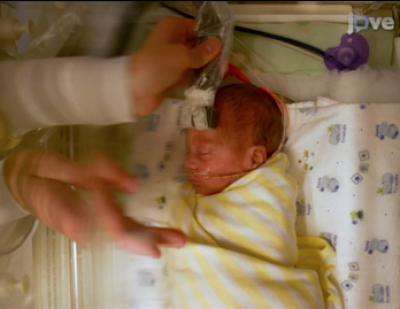New early warning system for the brain development of babies published

A new research technique, pioneered by Dr. Maria Angela Franceschini, will be published in JoVE (Journal of Visualized Experiments) on March 14th. Researchers at Massachusetts General Hospital and Harvard Medical School have developed a non-invasive optical measurement system to monitor neonatal brain activity via cerebral metabolism and blood flow.
Of the nearly four million children born in the United States each year, 12% are born preterm, 8% are born with low birth weight, and 1-2% of infants are at risk for death associated with respiratory distress. The result is an average infant mortality rate of 6 deaths per 1,000 live births. These statistics, though low compared to those of 50 or even 20 years ago, are troubling both to parents and to clinicians. Until recently there were no effective bedside methods to screen for brain injury or monitor injury progression that can contribute to developmental abnormalities or infant mortality. Dr. Franceschini's new system does both.
"We want to measure cerebral vascular development and brain health in babies," Dr. Franceschini tells us. Because neuronal metabolism is hard to measure directly, scientists instead evaluate cerebral oxygen metabolism, which highly corresponds to neuronal metabolism. Dr. Franceschini and her team have developed a near infrared optical system to quantify cerebral oxygen metabolism by measuring blood oxygen saturation and blood flow.
The technology is an improvement on continuous-wave near-infrared spectroscopy (CWNIRS), which measures oxygen saturation but does not provide long-term or real time brain monitoring. Instead, frequency-domain near-infrared spectroscopy (FDNIRS) is used in conjunction with diffuse correlation spectroscopy (DCS) to get a more robust evaluation of infant health. Dr. Franceschini explains, "CWNIRS has been used for many years but it only provides relative measurements of blood oxygen saturation. Our technology allows quantification of multiple vascular parameters and evaluation of oxygen metabolism which gives a more direct picture of infant distress."
"This technology will let us monitor babies who may be having seizures, cerebral hemorrhages, or other cerebral distresses and may allow us to expedite treatment," says Dr. Franceschini, who plans to develop and streamline this technology to one that nurses can use clinically. "We chose to publish in JoVE because it is important to show how these measurements can be done and this publication lets us reach early adopters."















